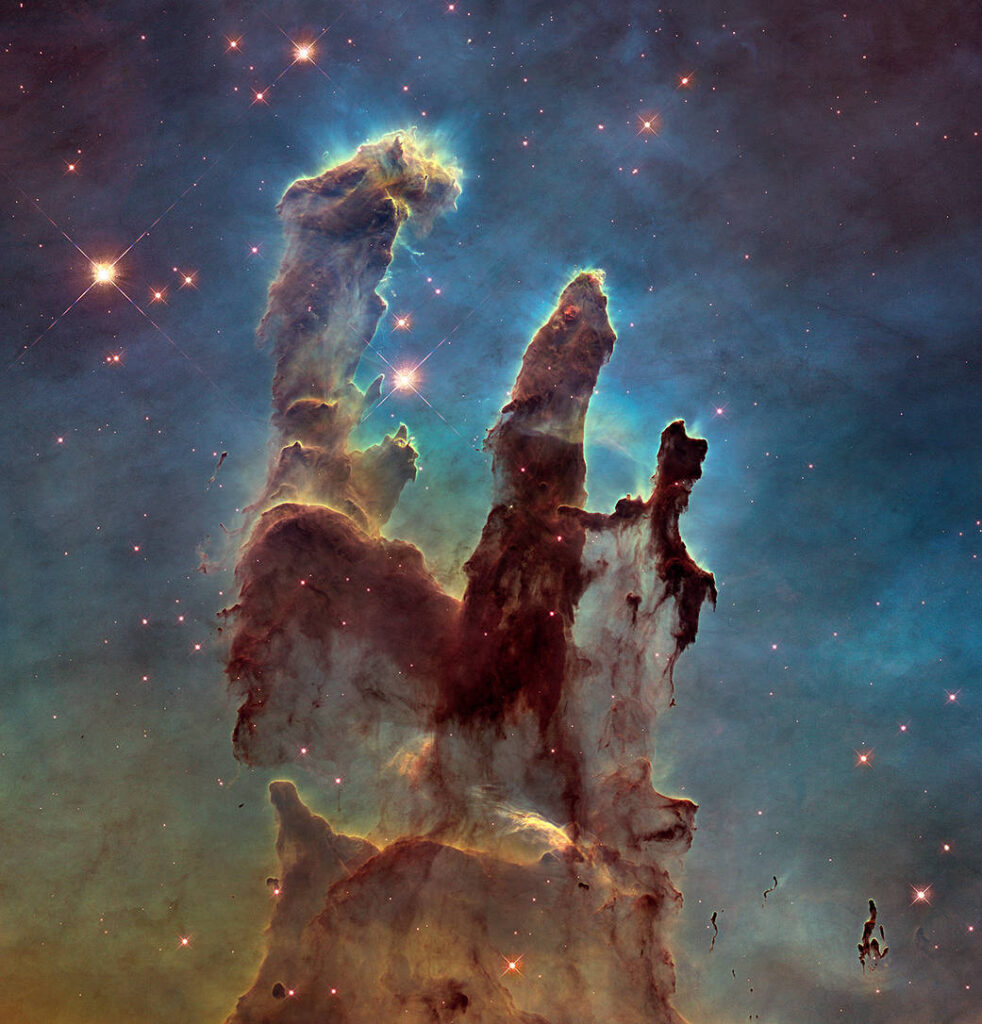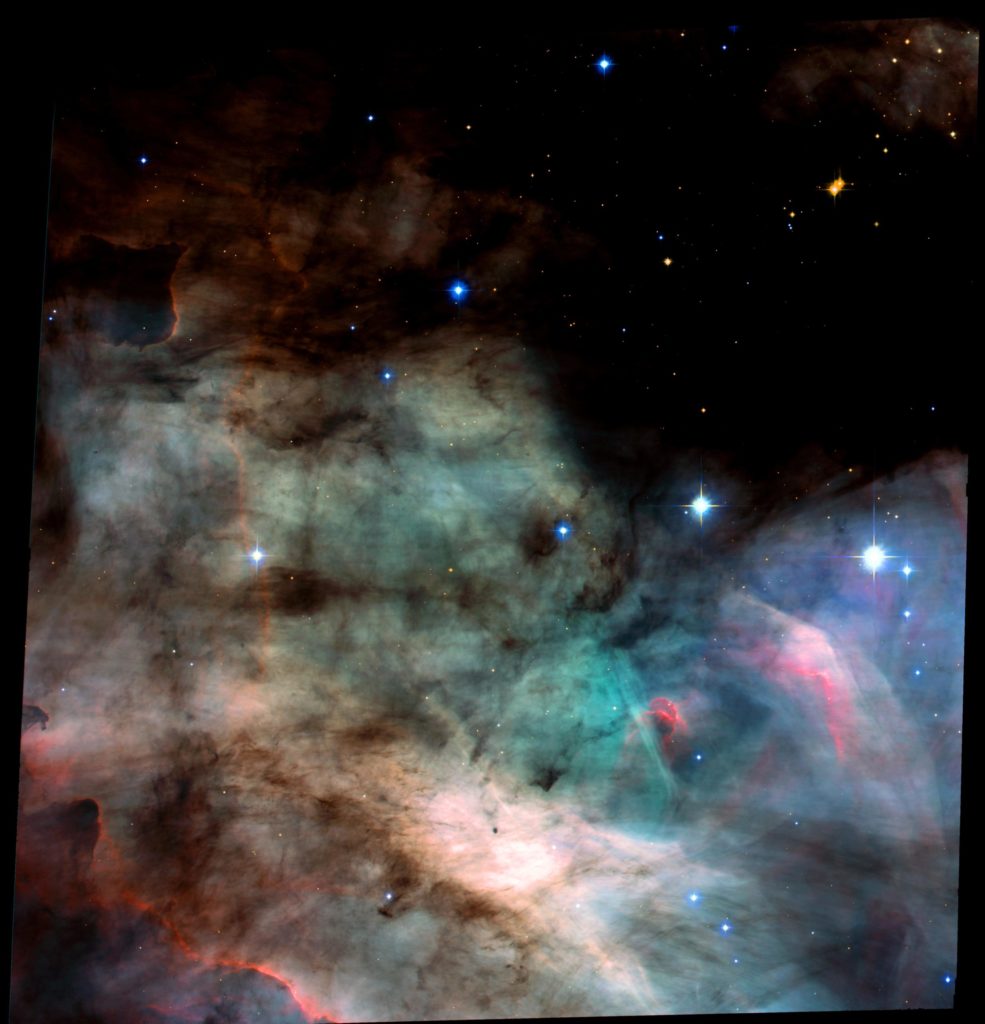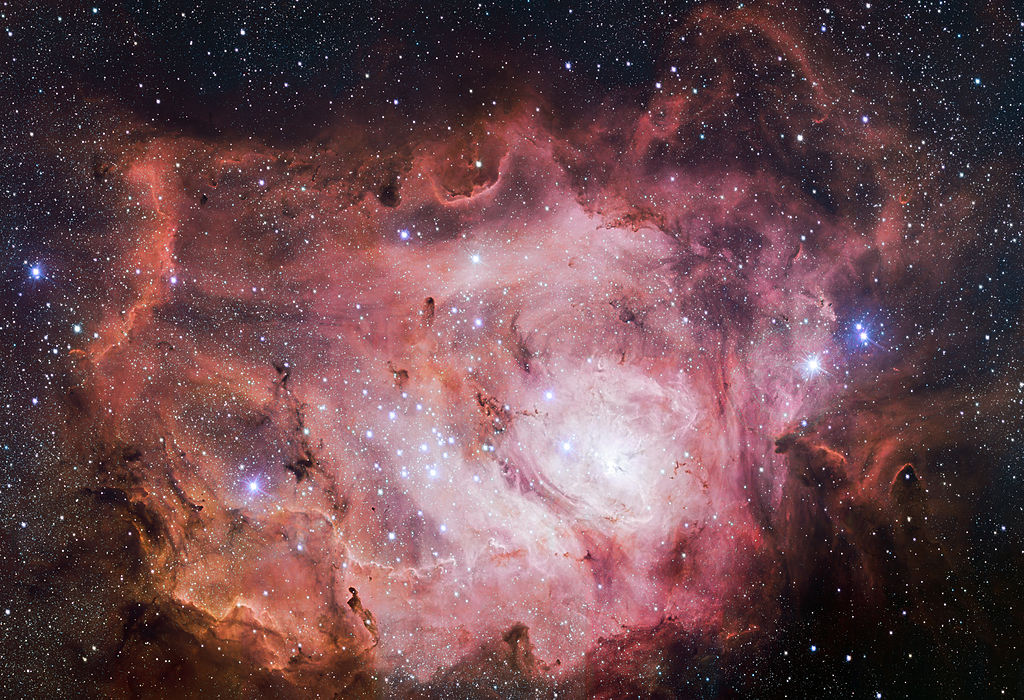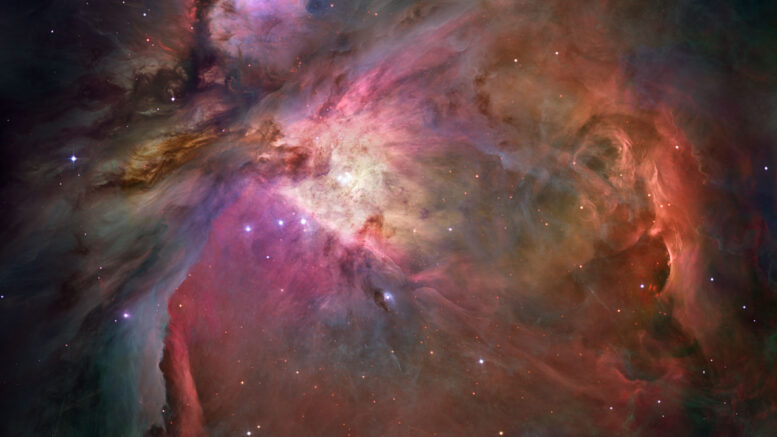When looking in the sky, there are several easy and well known diffuse nebulae (plural of nebula) that are visible from the Pacific Northwest and other Northern Hemisphere observing locations. A diffuse nebulae is a type of emission nebula consisting of an expanding, glowing shell of ionized gas ejected from red giant stars late in their lives.
Orion Nebula

When Visible: October to February, with the best times being December and January
How To Find: It is located just below Orion’s Belt, a prominent asterism in the winter sky. The nebula appears as the fuzzy middle star in Orion’s Sword, which is formed by a vertical row of three stars (i.e. two stars and M42) south of Orion’s Belt.
How It Looks: The nebula can easily be seen in binoculars and small telescopes. Small telescopes at higher magnifications will reveal the four brightest stars in the Trapezium Cluster, an open cluster of young, hot, massive stars that were formed within the Orion Nebula. The four stars form a trapezoidal shape and energize the surrounding nebulosity.
Fun Fact: The Orion Nebula is one of the most scrutinized and photographed objects in the night sky, and is among the most intensely studied celestial features.
Messier 78

When Visible: October to February, with the best times being December and January
How To Find: The nebula is pretty easy to find as it is located only about 2 degrees north and 1.5 degrees east of Alnitak, the easternmost star of Orion’s Belt.
How It Looks: The nebula can easily be seen in large binoculars and small telescopes, which show a hazy, comet-like patch of light with two 10th magnitude stars that illuminate it. M78 is also visible in 10×50 binoculars as a dim patch, but it requires clear, dark skies to be seen. 4-inch telescopes will sometimes reveal the haze around M78 and also show the nearby reflection nebula NGC 2071 under good conditions. 8-inch telescopes begin to show the details of M78.
Fun Fact: Infrared observations of M78 have revealed that at least 192 stars have formed within the molecular cloud associated.
Eagle Nebula

When Visible: April to Early September, with ideal viewing time being July
How To Find: One of the easiest ways to find M16 is to identify the constellation of Aquila and begin tracing the stars down the eagle’s back to Lambda. When you reach that point, continue to extend the line through to Alpha Scuti, then southwards towards Gamma Scuti. Aim your binoculars or image correct finderscope at Gamma and put it in the 7:00 position.
Another way to find M16 is by first locating the “Teapot” asterism in Sagittarius constellation, and then by following the line from the star Kaus Australis (Epsilon Sagittarii) – the brightest star in Sagittarius – to just east of Kaus Media (Delta Sagittarii). Another way to find the nebula is by extending a line from Lambda Scuti in Scutum constellation to Alpha Scuti, and then to the south to Gamma Scuti.
How It Looks: M16 is easily visible with good binoculars in good seeing conditions. Messier 16 is best seen in a low powered telescope. 4-inch instruments will resolve about 20 stars against several regions of nebulosity. The star cluster is quite easy to find, but the surrounding nebulosity requires extremely good viewing conditions and large aperture instruments. The famous Pillars of Creation can only be seen in 12-inch and larger telescopes.
Fun Fact: The above image of M16, taken by Hubble Space Telescope, is one of the most recognizable and detailed images Hubble has taken.
Omega Nebula

When Visible: April to September, with ideal viewing being in August.
How To Find: Using the stars of the Teapot in Sagittarius, an imaginary line drawn from Kaus Australis past just to the left of Kaus Media to the north leads directly to M16 and M17. The Omega Nebula lies just to the south of the Eagle Nebula. Two other famous nebulae – the Trifid Nebula (Messier 20) and the Lagoon Nebula (Messier 8) are located in the same part of the sky.
How It Looks: The Omega Nebula has a high surface brightness, making it visible as a smudge on telescopes in light polluted areas.
Fun Fact: The Omega Nebula was first discovered by Philippe Loys de Cheseaux in 1745.
Lagoon Nebula

When Visible: May to August, with ideal viewing being in August.
How To Find: It never rises very high above the horizon for observers in the Pacific Northwest. M8 is located just above and to the right of the Teapot asterism in Sagittarius. It can be found about 5 degrees west of Lambda Sagittarii, the star that marks the top of the Teapot.
How It Looks: In binoculars, the Lagoon Nebula appears as an oval-shaped patch with a visible bright core and a star cluster superimposed on it. Small telescopes reveal two distinct regions separated by a dark lane of dust. 8-inch and larger instruments show more dark bands through the central region, a brighter core, knots and other details of the nebula.
Fun Fact: It is one of only two star-forming nebulae faintly visible to the eye from mid-northern latitudes.
For other astronomical objects to observe, make sure to check out the Top 5’s and other articles on CosmosPNW to help with your journey. To stay up to date with CosmosPNW, make sure to follow us on Twitter and Instagram.

Be the first to comment on "Top 4 Easiest Diffuse Nebulae To View"